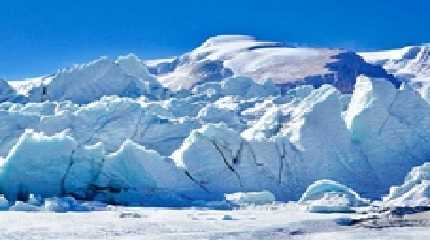
CANAZEI, Italy (AP) — Rescuers using drones resumed the search Tuesday for an estimated 13 hikers unaccounted-for following a powerful avalanche in northern Italy that killed at least seven people and is being blamed in large part on rising temperatures that are melting glaciers.
After rain hampered the search Monday, sunny weather on Tuesday allowed helicopters to bring more rescue teams up to the site on the Marmolada glacier, east of Bolzano in the Dolomites mountain range, even as hopes dimmed of finding anyone alive.
A huge chunk of the glacier cleaved off Sunday, sparking a avalanche that sent torrents of ice, rock and debris down the mountainside onto unsuspecting hikers below. At least seven people were killed and an estimated 13 remain unaccounted-for, officials said.
“We have to be clear, finding someone alive with this type of event is a very remote possibility, very remote, because the mechanical action of this type of avalanche has a very big impact on people,” said Alex Barattin of the Alpine Rescue Service.
Nicola Casagli, a geologist and avalanche expert at Florence university, said the impact of the glacier collapse on the hikers was greater than a mere snow avalanche and would have taken them completely by surprise.
“These types of events, which are ice and debris avalanches, are impulsive, rapid, unpredictable phenomena, reaching very high speeds and involving large masses,” he said. “And there is no chance of getting to safety or perceiving the problem in advance, because by the time you perceive it, you’ve already been hit.”
Associated Press photos, taken during a helicopter survey of the site, showed a gaping hole in the glacier as if carved out of the blue-gray ice by a giant ice cream scooper.
The terrain was still so unstable that rescue crews were staying off to the side and using drones to try to find any survivors or signs of life while helicopters searched overhead, some using equipment to detect cellular pings. Two rescuers remained on site overnight, and were joined by more rescuers Tuesday morning.
“We’re continuing the work of drones to find survivors, working the areas that we couldn’t monitor yesterday,” Matteo Gasperini, of the Alpine Rescue service, told Sky TG24. “We’ll try to complete the work of monitoring the entire site.”
Premier Mario Draghi, who visited the rescue base in Canazei on Monday, acknowledged avalanches are unpredictable but that the tragedy “certainly depends on the deterioration of the climate situation.”
Italy is in the midst of an early summer heatwave, coupled with the worst drought in northern Italy in 70 years. Experts say there was unusually little snowfall during the winter, exposing the glaciers of the Italian Alps more to the summer heat and melt.
“We are thus in the worst conditions for a detachment of this kind, when there’s so much heat and so much water running at the base,” said Renato Colucci from the Institute of Polar Sciences of the state-run Council for National Research, or CNR. “We aren’t yet able to understand if it was a deep or superficial detachment, but the size of it seems very big, judging from the preliminary images and information received.”
The CNR has estimated that the Marmolada glacier could disappear entirely in the next 25-30 years if current climatic trends continue, given that it lost 30% of its volume and 22% of its area from 2004-2015.
Casagli said what happened on the Marmolada was unusual, but said such destructive avalanches will become more frequent as global temperatures rise.
“The fact that it happened in a scorching summer with abnormal temperatures must be a wake-up call to understand that these phenomena, while rare, are possible,” he told reporters. “If we don’t take decisive measures to counter the effects of climate change, they will become more and more frequent.”




